#Lab Management Software
Explore tagged Tumblr posts
Text
Why WhatsApp Integration in Lab Software Is a Game-Changer for Diagnostic Centers
If you're running a diagnostic lab, you already know the struggle of keeping patients informed without overwhelming your front desk staff. Endless follow-up calls, lost test reports, and patients asking for updates — these are all part of the daily grind. But what if your lab could simplify all this with just one tool your patients already use every day? We're talking about WhatsApp.
Yes, integrating WhatsApp with your lab management software is no longer just a fancy upgrade — it’s a necessity. At ThinkLAB, we help labs like yours connect better, respond faster, and deliver smarter using WhatsApp-enabled lab software.
What Is WhatsApp Integration in LIMS?
In simple words, it means your lab software talks directly to your patient’s WhatsApp. Whether it's a booking confirmation, test report, or payment alert — everything gets sent to the patient automatically.
No extra clicks. No extra staff. Just instant communication.
With ThinkLAB’s WhatsApp-ready system, your lab stays connected and your patients stay informed.
Why It’s a Big Deal for Labs
Here's how WhatsApp integration for labs can completely transform the way you operate:
1. Instant Report Delivery
No more printing and stapling. Send digital reports directly to patients on WhatsApp within seconds. It’s fast, secure, and eco-friendly.
2. Live Test Status Updates
Let your patients know when their sample is received, tested, and report is ready. It reduces inbound calls and builds patient trust.
3. Fewer Follow-Up Calls
Your reception team no longer needs to call patients for payment collection or report pickup. ThinkLAB does it for you automatically.
4. Higher Patient Satisfaction
Patients prefer convenience. Giving them updates where they already spend their time (on WhatsApp) makes your lab their go-to choice.
5. Ready for WhatsApp Marketing
Once a patient visits your lab, you have a verified WhatsApp number. Use it to promote new test packages, health offers, or reminders later.
Before vs. After Effect
Before WhatsApp Integration:
Patients call 2-3 times asking for their report
Receptionist spends 5-6 hours on calls & follow-ups
Staff forgets to notify about payment link
After WhatsApp Integration:
Reports sent instantly on WhatsApp
Payment links shared with bill generation
Staff time saved, patient experience improved
��Ready to Upgrade Your Lab?
With ThinkLAB’s WhatsApp-integrated lab software, you’re not just staying connected — you’re staying ahead.
📅 Book a free demo today and experience how ThinkLAB can simplify your patient communication and scale your business.
Address: SDF Building, Sector V, Bidhannagar, Kolkata – 700091 Phone: +91-9330687508 Website: https://thinkwide.in/
1 note
·
View note
Text

Lab Management Software | Lab System
Lab Management Software : Lab System is a complete Digital lab management solution including popular evaluation boards, winning combinations and software, are hosted in a remote lab that one can access and test online.
0 notes
Text
The Future of Lab Efficiency: Trends in Lab management system software
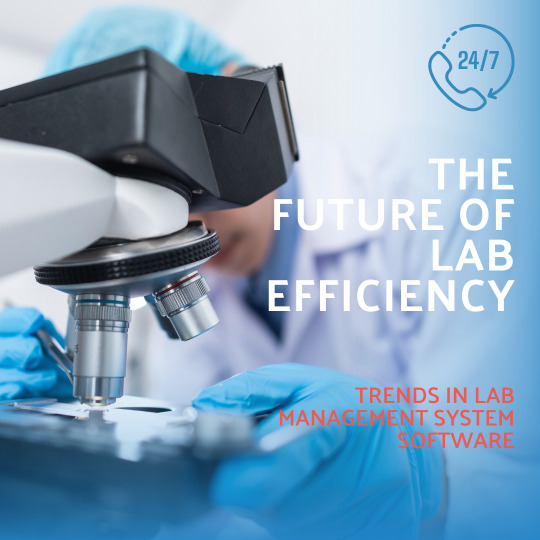
The integration of cutting-edge technologies has become imperative to enhance efficiency, sustainability, and productivity. The future of lab efficiency is intricately linked to the adoption of innovative Lab management system software solutions that streamline processes, optimize resource utilization, and drive advancements in research and development. This detailed blog delves into the key trends shaping the future of lab efficiency through software innovations.
Data-Centricity and Unified Platforms
One of the defining characteristics of the lab of the future is data-centricity. Laboratories are increasingly relying on unified modern platforms that seamlessly connect Laboratory Information Management Systems (LIMS), Electronic Lab Notebooks (ELNs), Laboratory Execution Systems (LES), and Scientific Data Management Systems (SDMS). By breaking down data silos and leveraging structured data, labs can make informed decisions, enhance collaboration, and drive research outcomes.
Automation and Robotics
Automation and robotics are set to play pivotal roles in enhancing lab efficiency. As the demand for greater productivity rises, smart quality initiatives are driving lab digitization and automation. Automation empowers technicians by relieving them of repetitive tasks, ensuring compliance with regulations, and enhancing operational efficiency. Robotics are poised to revolutionize physical tasks in labs, from sample preparation to inventory management, thereby optimizing workflows and reducing manual errors.
Artificial Intelligence and Machine Learning
The integration of Artificial Intelligence (AI) and Machine Learning (ML) technologies is reshaping lab operations. Neural networks, computer vision, and text mining are already delivering significant improvements in forecasting, optimization, and analysis. The lab of the future will feature AI-controlled 'lab assistants' and advanced analytics tools that enable efficient troubleshooting, supply chain management, and real-time trend monitoring for actionable insights.
Cloud-Native Development
Cloud-native development is emerging as a key trend in Lab management system software development. This approach focuses on building applications specifically for the cloud, offering rapid scaling, flexibility across different platforms, and enhanced reliability during disruptions. By embracing cloud-native strategies and utilizing technologies like Docker, Kubernetes, and Node.js, labs can accelerate application development, reduce costs, and adapt to dynamic operational needs.
Connectivity and Virtual Reality
The future lab environment will be characterized by enhanced connectivity and the integration of virtual, mixed, and augmented reality technologies. These innovations are set to streamline data entry, improve access to information, and minimize errors through mixed-reality solutions. The shift towards digital connectivity features and virtual technologies will empower labs to adapt to new modalities, enhance agility, and drive operational efficiency. In conclusion, the future of lab efficiency is deeply intertwined with the adoption of advanced software solutions that prioritize data-centricity, automation, AI integration, cloud-native development, and connectivity. By embracing these trends and leveraging cutting-edge technologies, laboratories can unlock new levels of productivity, sustainability, and innovation in their research endeavors. Stay tuned for more insights on the evolving landscape of lab efficiency and Lab management system software trends!
#lab management systems#lab management system software#lab management#lab management software#hospital erp#healthcare management system
0 notes
Text
Benefits of pathology management software
Riya Techno Software Pvt. Ltd. offers one of the best software for diagnostic center. Pathology management software offers numerous benefits to healthcare facilities, laboratories, and pathology departments. Here are some key advantages:
Sample Tracking: Automation of sample tracking from collection to analysis helps reduce errors and ensures the integrity of the samples.
Workflow Automation: Streamlining processes, such as result generation and reporting, improves overall efficiency and reduces manual workload.
Error Reduction: Automated data entry minimizes the risk of human errors in recording and transcribing patient information.
Data Security: Enhanced security features help maintain the confidentiality and integrity of patient data.
Faster Reporting: Automation accelerates the analysis and reporting of test results, leading to quicker turnaround times for patients.
Interoperability: Seamless integration with Electronic Health Record (EHR) systems and other healthcare platforms promotes a cohesive and connected healthcare ecosystem.
Regulatory Compliance: Helps adhere to industry regulations and standards, ensuring that the laboratory meets the required quality and safety standards.
Communication Channels: Facilitates better communication among laboratory staff, clinicians, and other stakeholders, promoting collaboration and information sharing.
Resource Optimization: Helps optimize resource utilization, reduce paper-based processes, and minimize unnecessary expenses.
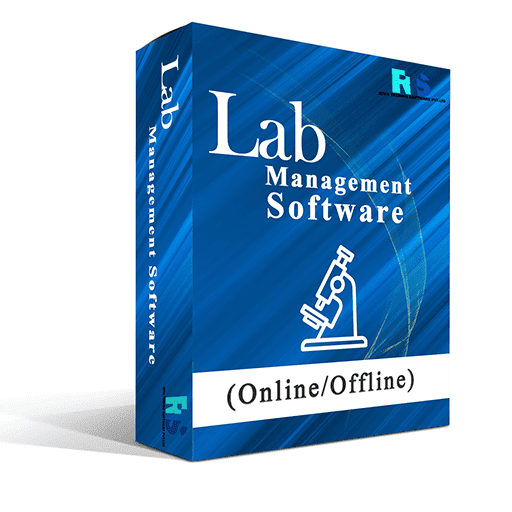
0 notes
Text
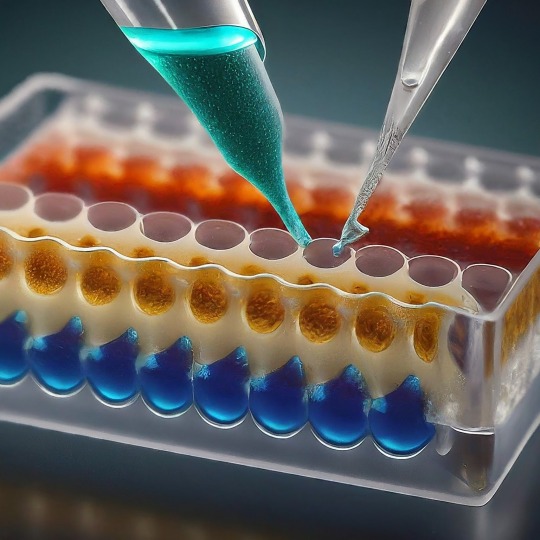
ELISA: A Powerful Tool for Detecting the Invisible
ELISA, or Enzyme-Linked Immunosorbent Assay, has become a cornerstone of medical diagnostics and biological research. This versatile technique allows scientists to detect and quantify minute amounts of target molecules, such as proteins, antibodies, and even viruses, with remarkable accuracy. In this blog, we'll delve into the world of ELISA, exploring its various types, its applications, and the exciting future directions this technology holds.
At its core, ELISA relies on the exquisite specificity of antibodies. Antibodies are highly specialized proteins produced by the immune system in response to foreign invaders. Each antibody can bind to a unique structure, called an antigen, on a specific molecule. In an ELISA, scientists leverage this binding property to create a sensitive detection system.
The 1960s witnessed a surge in interest in immunoassays, techniques that utilize the specificity of antibodies to detect target molecules. One such technique, radioimmunoassay (RIA), developed by Rosalyn Yalow and Solomon Berson, revolutionized medical diagnostics. RIA used radioactively labeled antibodies to detect antigens, offering high sensitivity. However, concerns regarding the safety of radioactive materials fueled the search for a safer alternative. The year 1971 marked a turning point. Independently, Eva Engvall and Peter Perlmann published their work on a novel technique – the enzyme-linked immunosorbent assay (ELISA). ELISA replaced radioactive labels with enzymes, eliminating the safety concerns associated with RIA. Like RIA, ELISA harnessed the specific binding between antibodies and antigens. However, it employed enzymes that could generate a detectable signal, such as a color change, upon interacting with a substrate. This innovation paved the way for a safer and more user-friendly diagnostic tool.
The basic ELISA protocol involves immobilizing the target antigen on a solid surface like a plate well. Then, a sample containing the molecule of interest (e.g., a suspected virus) is introduced. If the target molecule is present, it will bind to the immobilized antigen. Next, an antibody specific to the target molecule, linked to an enzyme, is introduced. This "detection antibody" binds to the target molecule already attached to the antigen. Finally, a substrate specific to the enzyme is added. This antigen-antibody binding is visualized using an enzyme linked to a reporter molecule. When the enzyme encounters its substrate, a detectable signal is produced, such as a color change or luminescence. The intensity of this signal is directly proportional to the amount of antigen present in the sample, allowing for quantification. The beauty of ELISA lies in its adaptability. Several variations exist, each tailored for specific detection needs.
The Four Main ELISA Formats are:
Direct ELISA: Simplicity at its finest. In this format, the antigen is directly coated onto the ELISA plate. A labeled antibody specific to the antigen is then introduced, binding directly to its target. After washing away unbound molecules, the enzyme linked to the antibody generates a signal upon addition of the substrate. Direct ELISA offers a rapid and straightforward approach, but sensitivity can be lower compared to other formats due to the lack of amplification.
Indirect ELISA: Unveiling the Power of Amplification. Similar to the direct ELISA, the antigen is first coated onto the plate. However, instead of a labeled primary antibody, an unlabeled one specific to the antigen is used. This is followed by the introduction of a labeled secondary antibody that recognizes the species (e.g., mouse, rabbit) of the primary antibody. This two-step approach acts as an amplification strategy, significantly enhancing the signal compared to the direct ELISA. However, the presence of an extra incubation step and the potential for cross-reactivity with the secondary antibody add complexity.
Sandwich ELISA: Capturing the Antigen Between Two Antibodies. Here, the capture antibody, specific for one region of the antigen, is pre-coated onto the ELISA plate. The sample containing the antigen is then introduced, allowing it to be "sandwiched" between the capture antibody and a detection antibody specific for a different region of the same antigen. A labeled secondary antibody or a labeled detection antibody itself can then be used to generate the signal. Sandwich ELISA boasts high sensitivity due to the double-antibody recognition and is often the preferred format for quantifying analytes.
Competitive ELISA: A Race for Binding Sites. In this format, the antigen competes with a labeled antigen (usually a known amount) for binding sites on a capture antibody pre-coated onto the plate. The more antigen present in the sample, the less labeled antigen can bind to the capture antibody. Following a washing step, the amount of bound labeled antigen is measured, providing an inverse relationship between the signal and the concentration of antigen in the sample. Competitive ELISA is particularly useful for studying small molecules that may be difficult to directly conjugate to an enzyme.
ELISA's Reach: From Diagnostics to Research. The applications of ELISA are as vast as they are impressive. Let's delve into some key areas where ELISA plays a vital role:
Unveiling the Mysteries of Disease: Diagnostics: ELISA is a cornerstone of diagnosing infectious diseases like HIV, Hepatitis, and Lyme disease. It detects antibodies produced by the body in response to the invading pathogen, providing valuable information for early detection and treatment. Monitoring Autoimmune Diseases: ELISA helps monitor autoimmune diseases like rheumatoid arthritis and lupus by measuring specific antibodies associated with these conditions. Cancer Screening: Certain cancers can be detected by identifying tumor markers, proteins elevated in the blood of cancer patients. ELISA assays are being developed to detect these markers for early cancer screening.
Safeguarding Food Quality: Allergen Detection: Food allergies can be life-threatening. ELISA ensures food safety by enabling the detection of allergens like peanuts, gluten, and milk in food products, protecting consumers with allergies. Monitoring Foodborne Pathogens: ELISA can identify harmful bacteria, viruses, and toxins in food, preventing outbreaks of foodborne illnesses.
Environmental Monitoring: Pollutant Detection: ELISA can detect pollutants like pesticides and herbicides in water and soil samples, contributing to environmental protection efforts. Microbial Analysis: This technique can be used to identify and quantify specific microbes in environmental samples, providing insights into ecosystem health.
Research and Development: ELISA plays a crucial role in various research fields: Drug Discovery: It helps researchers assess the effectiveness of new drugs by measuring drug-target interactions and monitoring drug levels in the body. Vaccine Development: ELISA is instrumental in developing vaccines by evaluating immune responses to vaccine candidates. Basic Research: Scientists use ELISA to study various biological processes by detecting and quantifying specific molecules involved in these processes.
Despite its established role, ELISA is evolving alongside technological advancements. New multiplex platforms allow for the simultaneous detection of various targets in a single sample, boosting efficiency in biomarker discovery and disease analysis. Automation streamlines workflows minimizes errors, and increases throughput, making high-throughput screening feasible in drug development and clinical settings. Miniaturization and portable devices enable rapid on-site diagnostics, providing healthcare professionals with real-time data for quicker interventions. Additionally, ongoing research is improving assay sensitivity, reducing background noise, and expanding detection limits, allowing for the identification of trace analytes and early disease biomarkers with greater accuracy than ever before. Integration of ELISA with emerging technologies such as microfluidics, nanotechnology, and artificial intelligence holds promise for enhancing assay performance, scalability, and data analysis capabilities.
These advancements hold promise for even wider applications of ELISA in the future. ELISA has revolutionized our ability to detect and quantify biological molecules. Its versatility, accuracy, and adaptability make it an invaluable tool across various scientific disciplines. As research continues to refine and innovate ELISA techniques, we can expect even more exciting possibilities to emerge in the years to come. ELISA's future is bright, promising to play a pivotal role in unraveling the mysteries of the biological world and improving human health.
#science sculpt#life science#molecular biology#science#biology#artists on tumblr#ELISA#immunology#immunotherapy#diagnostic management software#diagnosticimaging#history of immunology#scientific advancements#biotechnology#scientific research#scientific equipment#scientific instruments#techniques in biotechnology#scientific illustration#lab equipment#sciencenature#laboratory#lab skills#molecular diagnostics market
11 notes
·
View notes
Text
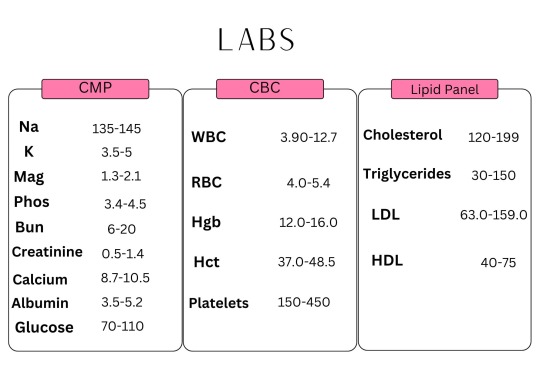
#icunurse#nursing school#nursing#etsy#icucare#hospital#icu#health and wellness#healthcare#diagnosis#diagnostic management software#medblr#patientcare#patientsafety#medical care#bloodwork#labs#note cards#reference#nursing studyblr#nursing student
6 notes
·
View notes
Text
Advanced Lab Management System in India
Ektos Health offers a powerful lab management system in India that helps automate every aspect of your lab—from test requests to sample tracking and report generation. Seamlessly integrated with our HMIS, it supports faster diagnostics and better patient care.
#Hospital Management Software in India#Lab Management system in India#Electronic Health Records Software
1 note
·
View note
Text

Monday CRM offers customizable and automated workflows that reduce manual tasks and improve sales tracking. Its flexible boards and automation rules help teams align sales activities with strategic goals and adapt quickly to market changes.
#bioscience#OctaneX Labs#API clinical trial management system#intermediates manufacturers#chemicals API#fine chemical#synthesis#CDMO Companies#CDMO India#life science chemicals#pharmaceutical fine chemicals#capsules#it#technology#it jobs#tech#crm benefits#crm services#sierra consulting#current events#technews#crm#crm strategy#sales crm#crm platform#crm integration#crm software#crm solutions#businesssolutions#business growth
0 notes
Text

Lab Management Software | LabSystem
Lab Management Software : LabSystem is a comprehensive digital lab management solution that enables individuals and organizations to access and test a wide range of evaluation boards and software applications in a remote lab environment. This system provides a convenient and efficient way to develop and test new products, technologies, and applications, without the need for costly hardware investments or physical lab space. The LabSystem platform offers a vast range of evaluation boards and software applications from various manufacturers, including winning combinations of popular components and tools.
This extensive selection of resources allows users to explore and experiment with different hardware and software options to create custom solutions tailored to their specific needs. The LabSystem environment is entirely online, meaning that users can access the lab remotely from anywhere with an internet connection. This remote accessibility makes it possible for teams to collaborate seamlessly from different locations, making the development process more efficient and cost-effective. Moreover, LabSystem comes with a suite of powerful tools and features that enable users to streamline their workflows and improve their productivity.
For example, users can access advanced simulation and testing tools, automate repetitive tasks, and manage their projects and resources from a single dashboard. Overall, LabSystem is a cutting-edge digital lab management solution that offers unparalleled convenience, flexibility, and cost-effectiveness. It is an excellent option for businesses, educational institutions, and individuals who want to innovate and develop new products and technologies without investing in expensive hardware or lab space.
0 notes
Text
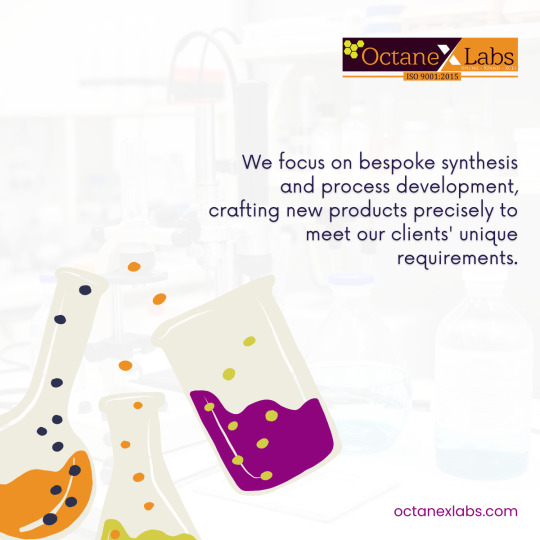
Our organization flourishes through partnerships rooted in shared values and ambitions. With quality at the center, we serve the Pharma, Agro, Fine, and Specialty Chemicals markets, offering complete solutions including high-quality CRO and CDMO services that drive innovation and performance.
#bioscience#OctaneX Labs#API clinical trial management system#intermediates manufacturers#chemicals API#fine chemical#synthesis#CDMO Companies#CDMO India#life science chemicals#pharmaceutical fine chemicals#capsules#chemicals#cro#cdmo#cdmo companies in india#cdmo services#science#chemical synthesis#chemistry#healthcare#cro services#CONTRACT#contract manufacturing#contract management software
0 notes
Text
Maximizing Efficiency: How Lab Management Software Boosts Productivity
Laboratories play a crucial role in patient care by offering essential diagnostic information that guides treatment choices and enhances results. Nevertheless, the conventional reliance on paper-based approaches is becoming progressively insufficient in meeting the requirements of contemporary healthcare delivery. That’s where Lab Management System Software (LMS) steps in, an innovative solution…
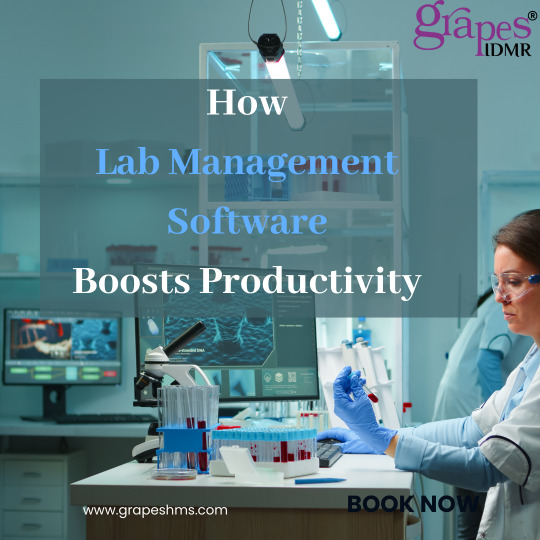
View On WordPress
#grapes lab management system software#lab management#lab management software#lab management system software#lab management systems
0 notes
Text
1 note
·
View note
Text
CloudLIMS’ New Doctor Management Functionality Empowers Diagnostic Labs to Streamline Physician Data Management
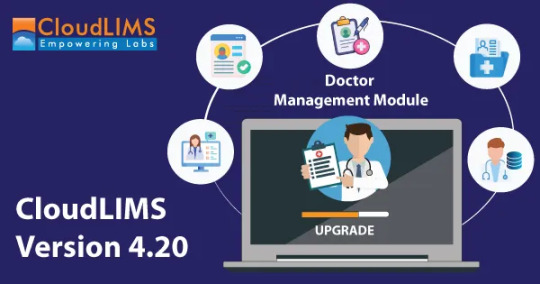
Wilmington, Delaware — March 11, 2025 — CloudLIMS, a leading provider of laboratory information management systems (LIMS), announces the launch of its Doctor Management Module, a transformative addition designed to streamline the management of doctor information.
This advanced module streamlines doctor records, enabling diagnostic laboratories to systematically add, update, and expunge doctor profiles associated with the hospitals they serve. With predefined attributes such as Name, Qualification, Department, Doctor ID, Email, and Contact Information, the module enhances consistency, traceability, and precision in doctor data management.
A defining capability of this module is its seamless interoperability with CloudLIMS’ Client Module & Client Portal, ensuring seamless association of doctors with corresponding hospital clients. When creating service requests, only the designated doctors affiliated with a specific hospital populate in the selection list, thereby mitigating transcription discrepancies, streamlining the workflow, and improving efficiency. Additionally, doctor information has also been incorporated into the Submit Order and Add Request forms, simplifying the ordering process for laboratories.
This module is particularly advantageous for high-throughput diagnostic laboratories collaborating with multiple hospital clinics, each having a distinct group of doctors. Its built-in intelligent filtering mechanism ensures that only relevant doctors are associated with clients and service requests, thereby preventing erroneous assignments and fostering seamless coordination between laboratories, hospitals, and doctors.

Figure 1: CloudLIMS adds a secure and intuitive Doctor Management Module to its diagnostic lab management software
CloudLIMS remains steadfast in its mission to pioneer state-of-the-art informatics solutions that advance laboratory automation, regulatory compliance, data management, and operational excellence. The Doctor Management Module is now available in the latest version of CloudLIMS.
About CloudLIMS
CloudLIMS.com offers a secure, in-the-cloud, SaaS LIMS purpose-built for clinical diagnostic labs. CloudLIMS offers a range of complimentary services, including technical support, product training, instrument integration, reporting templates, product upgrades, legacy data migration, and automatic data backups. CloudLIMS helps labs maintain user access for PHI control, manage clinical data, automate workflows, and meet compliance such as CLIA, HIPAA, ISO 15189, and EU GDPR. CloudLIMS.com is a SOC 2 compliant and ISO 9001:2015 certified informatics company. For more information, please visit www.cloudlims.com.
Contact:
Mrinal Kanti Chatterjee CloudLIMS.com 302–789–0447 [email protected]
0 notes
Text
HR Payroll software system
youtube
#hr payroll#hr software#human resources management#hrm software#erp#erp software#t lab#T LAB#t lab hrm#t lab HRM#T Lab hr#hrm#accounting software#hr payroll in usa#hr software in europe#Youtube
1 note
·
View note
Text
Boosting Efficiency with Test Lab Management Systems: How Technology Enhances Product Development
In today's fast-paced business environment, the pressure to bring high-quality products to market quickly is ever-increasing. One of the key enablers of efficient product development is the effective management of test labs. Test Lab Management Systems (TLMS) have emerged as a critical tool in optimizing the testing and validation phases of product development, ensuring quality, reducing time-to-market, and enhancing innovation.
What is a Test Lab Management System?
A Test Lab Management System (TLMS) is a software platform designed to streamline the management of test environments, resources, and processes. These systems provide centralized control over test equipment, schedules, results, and reports, helping product teams manage testing activities across various stages of development.
In industries such as manufacturing, automotive, electronics, and software, where product complexity is constantly evolving, TLMS provides a structured approach to managing test data, automating workflows, and ensuring that testing aligns with business goals.

Key Benefits of Test Lab Management Systems
Improved Resource Utilisation TLMS ensures that testing resources—whether human or physical equipment—are allocated effectively. By automating resource scheduling and tracking, businesses can minimize idle time and avoid costly delays. This optimal use of resources leads to faster development cycles, making companies more agile in responding to market demands.
Enhanced Collaboration and Communication Product development often involves cross-functional teams, including engineers, designers, and quality control specialists. TLMS fosters seamless collaboration by providing a centralised platform where all stakeholders can access test data, track progress, and communicate about issues in real-time. This reduces silos and improves team efficiency, contributing to more synchronized project execution.
Better Quality Control and Risk Management With automated tracking of test results, defects, and performance benchmarks, TLMS provides robust data that can be used to identify patterns, predict potential issues, and ensure compliance with industry standards. Businesses can detect flaws early in the development process, reducing the risk of costly post-launch issues and ensuring that the product meets or exceeds customer expectations.
Streamlined Compliance and Reporting For businesses operating in regulated industries, TLMS simplifies compliance by ensuring that all tests are documented and auditable. Automated reports and real-time dashboards provide clear insights into testing progress and outcomes, helping businesses meet regulatory requirements without the manual effort traditionally involved in generating reports.
Data-Driven Decision Making The rich data generated by TLMS offers valuable insights into test performance, resource usage, and project timelines. By analyzing these metrics, businesses can make informed decisions that drive continuous improvement. Additionally, these insights help to identify areas where processes can be optimized, reducing waste and improving the overall efficiency of product development.
Why Test Lab Management Systems are Critical in Today’s Business Landscape
As products become more complex and global competition intensifies, businesses need to enhance their product development efficiency to stay ahead. TLMS aligns perfectly with the modern need for faster innovation and higher-quality products. By integrating cutting-edge technology with product testing processes, businesses can maintain a competitive edge, reduce operational costs, and improve time-to-market.
In industries such as software development, for example, continuous integration and automated testing are essential for meeting the demands of a rapidly changing digital landscape. TLMS can integrate seamlessly with other enterprise systems, such as enterprise resource planning (ERP) and project management tools, creating a cohesive ecosystem that drives end-to-end efficiency.
Real-World Impact of TLMS on Business Efficiency
Consider the case of an electronics manufacturer that implemented a TLMS to handle the testing of their new products. Before adopting the system, the company struggled with inefficient test scheduling, excessive downtime, and difficulty maintaining consistent quality across product lines. After the implementation of the TLMS, the company experienced a significant reduction in testing errors, faster turnaround times for test results, and improved collaboration across departments. As a result, product releases were more timely, and customer satisfaction improved due to the higher reliability of products.
Conclusion
Test Lab Management Systems are not just a tool for managing tests—they are an integral part of the modern product development lifecycle. By enhancing resource management, improving collaboration, and enabling data-driven decisions, TLMS help businesses streamline operations, reduce risks, and deliver superior products. In an increasingly competitive market, investing in these systems is crucial for organizations looking to stay ahead in the race for innovation, efficiency, and customer satisfaction.
For businesses aiming to boost their product development efficiency, embracing TLMS can provide the technological edge needed to navigate today's complex and fast-moving marketplace.
#Test Lab Management Systems (TLMS)#Product development efficiency#Resource utilization in product testing#Test management software
0 notes